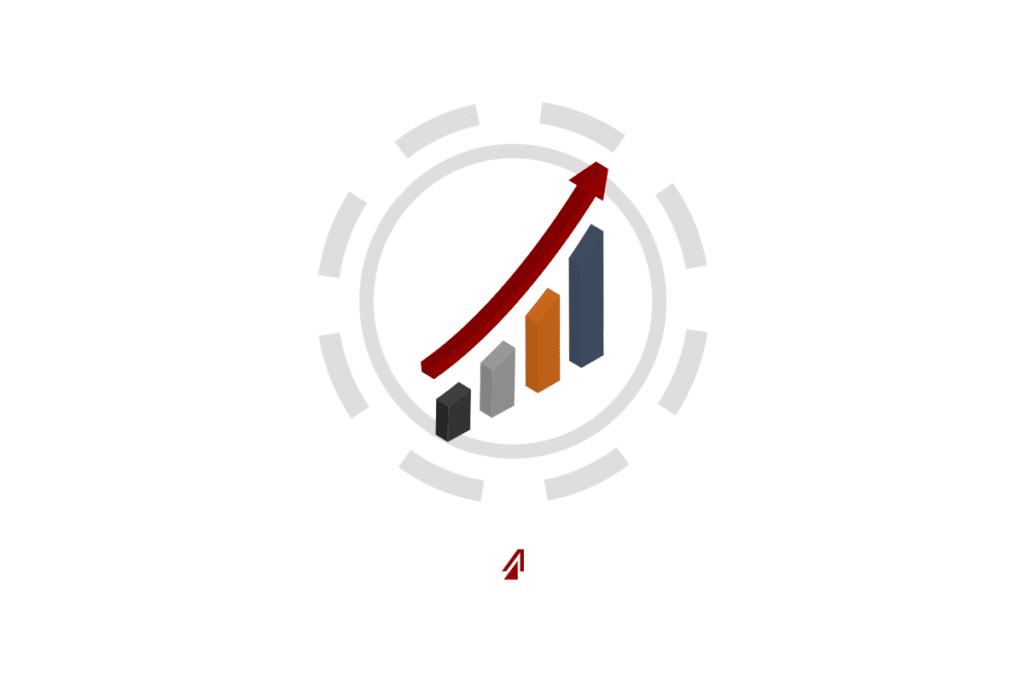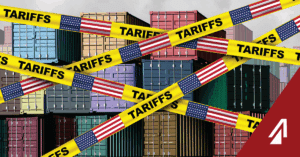2020 is the beginning of a new decade, and with it, the logistics industry will see some significant new trends. Alongside these new trends are some familiar ones that have grown and developed over the course of 2019. Take a look at what is coming up this year in these categories: Trucking, Technology, Quality/Six Sigma, Regulation, Sustainability, and Global Trade. See how these trends will impact your supply chain in 2020.
Trucking
This year, the American Transportation Research Institute (ATRI), along with the American Trucking Association (ATA) has published their study of top industry issues for 2019. This is a comprehensive list of issues and concerns truck drivers have within the logistics industry. Many concerns are repeated from the 2018 list, like Driver Shortages, Hours of Service, and Truck Parking; but several new concerns have presented themselves as trends to watch for in 2020.
Driver Compensation
According to the study, this is the first time in the history of the survey that Driver Compensation has been in the top 10 driver concerns. (Ranked #3) This trend may seem odd as driver wages are higher than they have been in years. Fewer drivers has led to an increase in driver pay as well as creativity in the way drivers are paid. Many fleets are leaving the “per-mile” model in favor of salary-plus, per-load, and percentage-of-load models. One reason this is a top concern for the logistics industry is that drivers are more concerned that their compensation has not kept with inflation rates and they are not seeing adequate returns for non-driving duties like Detention.
Detention/Delay at Customer Facility
The issue of Detention has been a long-time driver concern according to many logistics article comment sections and trucking message boards; but this is the first year the issue has made the list in the Top Driver Concern study. (Ranked 4th) This has been a growing issue over the years that has become exasperated by the hours of service rules and tighter monitoring brought on by the ELD mandate. According to a recent ATRI study, “drivers reported a 27.4 percent increase in delays of six or more hours between 2014 and 2018.” These delays have a ripple effect that prevents them from complying with HOS rules, reduces their earning potential, and puts them in position to park unsafely. Overall, this is a growing concern that will be trending in 2020.
Technology
Technology is a fast-paced industry and logistics technology is no exception. There are many new advancements in logistics technology, as well as deeper understanding and utilization of current technologies. Upcoming logistics tech trends for 2020 include more Artificial & Augmented Intelligence, Real-Time Visibility, and Tech-based Company Growth.
Artificial & Augmented Intelligence
A.I. has been a progressive logistics trend for years. However, every year, its capabilities grow stronger and more efficient – earning this tech its place in 2020’s trends. A.I. can help with nearly every aspect of logistics from route planning to data mining and analysis. One of the chief places A.I. will help in 2020 is with planning. This is vital as the technology will work with human inputs to reduce mistakes, boost worker productivity, and increase cost savings. Gartner said recently that A.I. will create $2.9 trillion in in business value and lead to an increase of 6.2 billion hours of worker productivity. That will significantly drive down costs and boost productivity.
Real-Time Visibility
Visibility is one of the most valuable customer service measures a company can offer. In 2020, Real-Time Visibility will come from increased IoT usage as well as stronger data analytics. Companies will be able to buy cheaper, more effective equipment to capture data and apply technologies like A.I. to the data to interpret it. This will create better decision making.
Tech-Based Company Growth
Techno-Brokers or Digital Freight Forwarders are upcoming trends in the logistics market. They offer the appeal of reducing the number of middle men and promise higher profits through automation. Companies like Uber Freight appeared in 2017 and are gaining popularity. As a result, more traditional companies are looking at web-based load pairing to help compete with these up-and-coming logistics companies.
Quality/Six Sigma
Many trends for 2020 include data and how it will be used. Quality/Six Sigma trends are the same. More companies will be using data, provided by technology, to root causes for success and improvement. Decision makers will have stronger, fact-based evidence on which they can make their decisions.
Regulation
Another trend for 2020 will be the effects of split sleeper berth flexibility. Previously, drivers had to take 10 consecutive hours of rest in their sleeper berth. But, new legislation allows drivers to break that time period into two segments as long as they are both longer than two hours. This should have a serious effect on driver efficiency and safety. Over the coming year, researchers will study the effect of this new rule to see if safety increases or not.
Sustainability
Technology and public assistance has played a major role in upcoming Sustainability trends. In 2020, more drivers will be using fuel efficient and electric vehicles, more efficient routes, and partner with the EPA in the updated SmartWay 2020 Vision program.
Vehicles
Retail giant, Amazon is leading the way by partnering with Rivian, an electric vehicle startup. Rivian will supply Amazon with 100,000 electric vans over the coming years. This will help reduce carbon emissions from fuel and allow Amazon to approach the last mile delivery phase more sustainably.
Not only are electric vehicles on the rise, but natural gas vehicles as well. These vehicles can cut carbon emissions by as much as 70%. Currently there are more than 130,000 of these vehicles on the road, but with programs like Clean Energy’s Zero Now, more drivers will make the switch.
Routes
An upcoming trend is to use A.I. technology to plan routes based on least carbon emissions, hottest freight, and reduced costs.
SmartWay 2020
SmartWay 2020 is a partnership program with the EPA to help logistics become more sustainable. Partners have saved 6 billion gallons of fuel, lowered fuel costs by $20.6 billion, and reduced carbon emissions by 60 million metric tons according to the EPA. SmartWay began in 2004 and has grown from 20 partners to over 3000. Through this partnership, the EPA works with companies “using market-based incentives and technology solutions to ensure that the partnership would effectively address long-term trends, changes and challenges in the goods movement industry.”
Global Trade
Finally, we come to one of the most divisive trends of 2020 – Global Trade. Currently, the United States is involved in a number of trade activities that will change the landscape of global trade in 2020. It is restructuring its involvement in the UPU, agreed to the USMCA, and continues to threaten to leave the WTO.
UPU
The UPU is the Universal Postal Union and it effectively regulates what countries can charge to deliver other countries’ mail. The U.S. had threatened to leave the union if it did not allow the U.S. more autonomy and reclassify nations, like China, who they saw as “gaming” the system. The Union, however, came to a unanimous decision to adopt Option V, a compromise measure that allows the U.S. and other nations to set their own postage rates. The U.S. will set its own rates beginning in July 2020, and the rest of the world will start in January 2021.
USMCA
This is a North American trade deal set to replace the aging NAFTA. The new deal will ensure greater protection for farmers, auto industry workers, intellectual property, and other hotly contested commodities like aluminum and steel. The U.S. is expected to adopt the trade deal in Congress in late 2019 or early 2020 – with Canada to follow shortly after.
WTO
The U.S. has been at odds with the World Trade Organization (WTO) since the George W. Bush administration and has continued at odds during both the Obama and Trump presidencies. Each administration saw the WTO as taking advantage of the U.S. in regards to its trade policies and have protested their treatment. In late 2019, the highest appellate court in the WTO ceased to function. What will happen as a result will be a major global trade trend in 2020.
These are the trends to watch in 2020! Do you agree? Let us know in the comments below.



